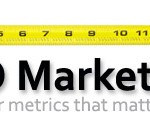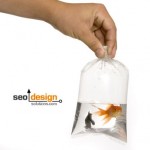Is there such a thing in SEO as the off-page inbound link sweet spot? Meaning, finding the tipping-point for inbound links per URL, per keyword…
Based on our heuristic testing, absolutely! Just like wine, links get stronger with age – if they are supported by (a) sufficient internal links within the site linking out or (b) have deep links from other websites augmenting them.
If properly augmented, then those pages become hub pages (pages with trust and ranking factor) which can rank additional spokes (pages) on the wheel via links.
Internal page augmentation can be as simple as using an RSS feed, syndicating a page and providing a link back to the published page.
Do this with 5 RSS aggregators and you could get 5 backlinks for every page or post you create. Do this with hundreds of RSS aggregators or syndication sources and you can get hundreds of links per day (just from adding one page of content).
This method is easy to implement with WordPress (if you have a content development strategy in place) to drip fresh content.
Each new page or post published represents another opportunity to leverage and syndicate that content (to build links back to the original page) which can eventually sprout PageRank and pass ranking factor to your preferred landing pages.
Those link-rich hub pages also double as places to build solid secondary navigation or internal links to your commercial landing pages or other hub pages in your website to enhance search engine positioning.
Link Signals
One often overlooked aspect of search engine optimization is that search engines are programmed to suppress new link signals (for passing ranking factor) until they pass a certain criteria of trust.
The link/trust threshold is the secret sauce known only by a select group of developers from Google, Yahoo and Bing. The prime directive of this filter to keep their search engine indices less polluted (from aggressive link building tactics).
The good news is, if you are building links properly, you can get past this filter by layering permanent one way links strategically over time.
I have witnessed:
- the first phase at approximately 10-14 days (to sprout a ranking from inbound links)
- the second phase of a the link /trust cycle is estimated at 40-45 days
- the third phase in the link-flow cycle typically occurs in the 90-120 day range and
- the fourth phase occurs after 6-8 months – and continues to pass more value as time progresses.
After the 8 month threshold, a backlink is stable and well on it’s way to gaining trust and passing along its total link flow to the target site. This suggests that as links age, they pass more ranking factor.
The three primary factors that impact this algorithm are (1) the age/time of the link and (2) the relevancy of the link and (3) page strength as determined by the number of inbound / outbound links on the page providing the link.
As an aspect of link velocity, the rate in which you gain and / or lose inbound links impacts a website, but also, the age (as mentioned above) dramatically impacts ranking.
We can speculate the reason for this, but rather than look at the nuts and bolts of the algo, simply think like a developer and put yourself in the shoes of the programmers crafting the coding symphony known as Google’s search algorithm.
How would you keep new links from being disruptive (if automated or otherwise) if they passed 100% ranking factor out of the gate? This would be an open invitation for automation (which could easily skew search engine result page results) from a barrage or spike of links.
Factoring The Link Grandfather Effect
The answer to this quandary, merely think of it as an algorithmic link-throttle that essentially limits how much link-juice links produce based on specific thresholds.
Put simply, as links age, they pass more trust, trust translates into (a) PageRank (b) link-flow which in turn pass ranking factor along the link graph to the target page (which eventually becomes more buoyant (until it collides with the next page above it who has more relevance score) and then subsides in the search engine result pages.
Aside from the off page inbound links, their age and relevancy, typically on page factors or the degree of your on page efficiency determines how many off page inbound links are required to cross the tipping point.
Each website varies based on the competition in the marketplace, the on site architecture, the volume and integrity of the internal links, the age of the site, how each page is fed in the hierarchy and how many shingles (supporting keyword occurrences) or internal links based on semantic overlap are present.
So, if you understand that it’s not always backlinks that push rankings higher, it’s capping link-loss and trust from the pre-existing inbound links or strong internal pages getting more link-flow and pushing it to the appropriate silo (preferred landing page) of the semantic theme that make this a powerful on page and off page SEO combination.
One quick way to give your rankings a boost is (a) build links to your links or (b) go back to published URL’s and syndicate them across multiple feeds (to get more page level citation) which in turn translates into buoyant rankings.
The takeaway here is (1) use content syndication and aggregators to steadily build a stream of inbound deep links to internal pages and (2) use the collective link-weight they produce to rank multiple semantic themes within your website.











Jeffrey, the link trust factor and phases is something I had no idea about…Can you post some of your link building resources?
Everything I refer to comes from our own experiences over a 14 year period.
My blog is on my sixth month so I will check if these points hold. Had I read an article like this earlier, I would have observed the phases described and how it manifest in my blog’s ranking.
Thank you.
Best article I’ve read about link building in a long time. One thing I didn’t notice is your stance on anchor text and how it relates to your “link profile”. Everything above would work unless you have thousands of instances of the same anchor text in which it would be easy for G to know the links were built by an SEO
Wow this sounds like ALOT of hardwork and tons of patience! Whew. No wonder this secret sauce/sweet spot is much revered.